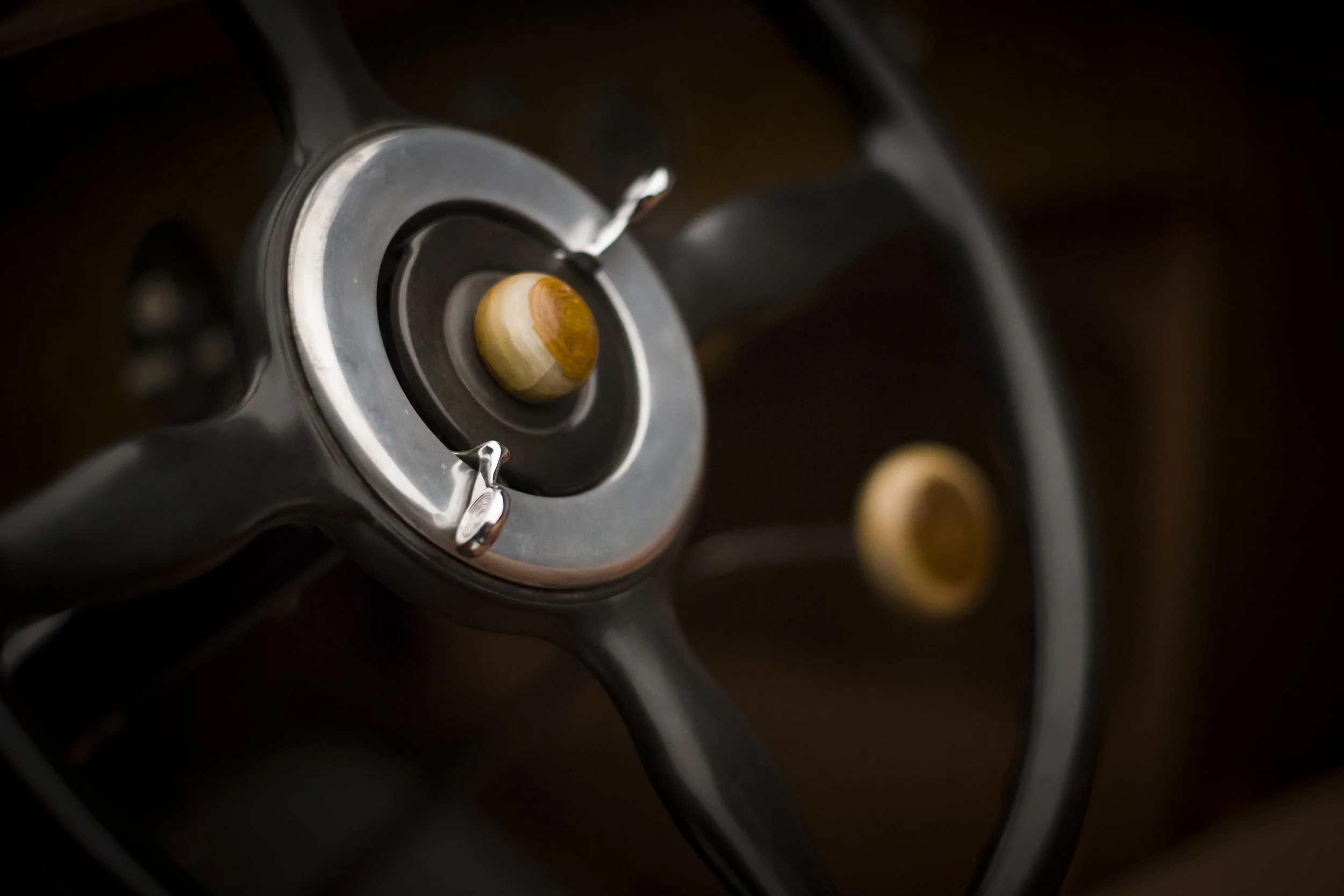1929 Packard Series 640 Convertible










1929 Packard Series 640 Convertible
The Custom Eight 640 was the companion to the DeLuxe Eight 645, Packard’s top-of-the-line cars with their big eight cylinder engine. Interestingly, the 640’s wheelbase was decreased by two inches to differentiate it further from the ultra-long 645. Both, however, were intended for coachbuilding. Of the nine designs available from the catalog for the 140.5-inch wheelbase model 640, were three from coachbuilders. All three were by Dietrich, understandable given that Dietrich had a working relationship with Packard. And as Dietrich was best known for Convertible Sedan bodies, it would be no surprise to find a 640 Convertible Sedan by Dietrich.
- YEAR & MAKE - 1929 Packard
- MODEL NAME - Custom Eight
- SERIES - 640
- BODY TYPE - 4 Door, 5 Passenger Convertible Sedan
- BODY BY - Larkins & Co.
- # CYLS. - Strt. 8
- TRANSMISSION TYPE & NUMBER - 3 Speed, Two Plate Clutch, RWD
- WEIGHT - 4,245 lbs
- ESTIMATED PRODUCTION - 9,801
- HP - 105
- C.I.D. - 384.8
- WHEELBASE - 140.5″
- PRICE NEW - $3,175
Much less likely, however, is a 640 Convertible Sedan by Larkins & Co.. The San Francisco firm was in business from 1865 as carriage builders, but during the motorcar era, Larkins was mostly known for their folding tops and a high-quality paint shop. Starting around 1915, however, they intermittently operated as coachbuilders, including bodying at least two of the three Fageol automobiles in 1917, the most expensive cars built to that date. Other famous associations include bodying a number of cars for George Whittell in the late Twenties (Whittell’s Murphy-bodied Duesenberg coupe is one of the most valuable American cars ever constructed).
Coachbuilt lists several known Larkins bodies, for Rolls-Royce, Chevrolet and Marmon, as well as Fageol and Packard, but today, only two vehicles survive with a Larkins nameplate, this car; and a Thirties Chevrolet built for Wells Fargo.
Because of its incredible rarity, Packard 176315C was the subject of study by both Packard and coachbuilding historians. Notably, Packard marque expert and LeBaron draughtsman Hugo Pfau mentions it in The Coachbuilt Packard, where he speculates that the French-influenced Clear Vision design, with its large, vertical windows, might be a sign that the body was originally constructed by Murphy in Pasadena, California, and later refurbished in the Larkins paint shop. Murphy did debut their Clear Vision styling on a 1927 Packard, and built several sedans in 1928. This car’s cast aluminum door panels are another Murphy signature, which given there are only two known surviving Larkins bodies isn’t an argument one way or another. Coachbuilt also proposes it is possible that Murphy supplied Larkins with aluminum components for their own construction. Given Larkins’ proximity to Murphy, and Murphy’s known construction of Clear Vision Packards, there is no reason beyond these clues to suppose that Larkins didn’t create their own version for this chassis. Additionally, Larkins’ main business was always in their artfully constructed folding tops, so a car which demonstrated both that and their in-house line of Rynamel paints would be logical.
Another full restoration by a Murphy expert might yield more clues in the construction. The last was performed over the course of 14 years by beloved Vancouver-area enthusiast Harvey McEwen, a pioneer of collecting in Canada, and a founder of the Vintage Car Club of Canada. Towards the end of his epic restoration, Harvey discovered the original engine, # 172011, had a crack in the block, and replaced it with engine #176315, originally in a 1929 640 close coupled sedan. He acquired the car in 1970, when it was apparently still original, with only 16,000 miles. In a 1985 interview, he stated that be believed it had been constructed for European touring, with dual trunks, one of which is an original Packard dealer accessory; driving and spot lamps; a stone guard; and built-in lap robe. Disc wheels were common on Convertible Sedans, although the dual side mounts were an option, and they were certainly not chromed without someone very particular specifying that modification. A Rouge body with chocolate brown fenders seems to be the colors in which Harvey found it.
Harvey McEwen believed there were only about 10 1929 Convertible Sedans built on the 640 chassis, so whether it is someday confirmed as one of the two Larkins bodies; or determined to be a Murphy, it will almost certainly remain the only one in this style ever made.
